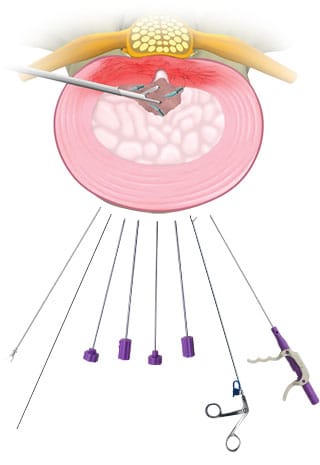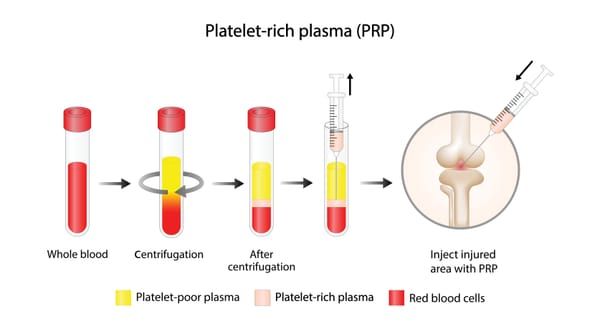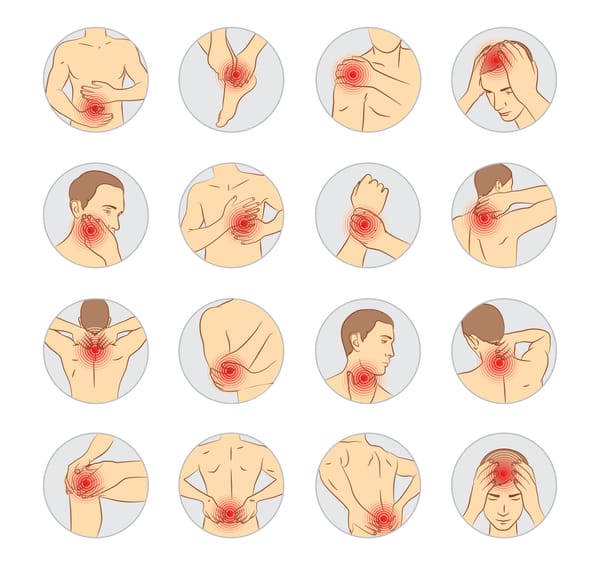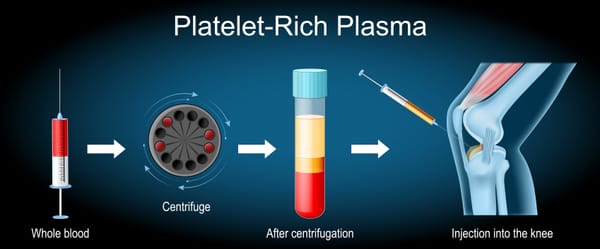Disc-FX for Treating Disc Protrusions: A Minimally Invasive Path to Relief

Disc protrusions, also known as bulging or herniated discs, are a common cause of back and leg pain, often disrupting daily activities like sitting, walking, or working. For those who find limited relief from conservative treatments like physical therapy or medications, Disc-FX offers a minimally invasive option to address disc protrusions and alleviate pain.
In this blog post, we’ll explore what disc protrusions are, how Disc-FX works to treat them, and what patients can expect, all explained clearly for a general audience.
Understanding Disc Protrusions
Disc protrusions occur when the intervertebral disc—a cushion-like structure between the vertebrae—bulges or herniates, with the inner gel-like core (nucleus pulposus) pushing against or through the outer layer (annulus fibrosus). In the lumbar spine (lower back, L1-L5), protrusions can compress nearby nerve roots, causing pain, numbness, or weakness. Common terms include:
- Bulging Disc: The disc protrudes without rupturing the annulus.
- Herniated Disc: The nucleus breaks through the annulus, potentially irritating nerves.
Disc protrusions are a leading cause of lower back pain and sciatica (radiating leg pain), affecting 1-3% of adults annually, per a 2020 study in The Spine Journal. They can significantly impact quality of life, making effective treatment crucial.Causes and Symptoms of Disc ProtrusionsCauses include:
- Degenerative Disc Disease: Age-related wear reduces disc height and elasticity, increasing protrusion risk.
- Trauma: Heavy lifting, falls, or accidents can cause disc bulging or herniation.
- Repetitive Stress: Prolonged sitting, bending, or poor posture strains discs.
- Genetics: Some people have weaker disc tissues, increasing susceptibility.
- Lifestyle Factors: Obesity, smoking, or sedentary habits heighten risk.
Symptoms include:
- Lower Back Pain: Aching or sharp pain, often worsened by sitting, bending, or lifting.
- Radicular Pain (Sciatica): Sharp, burning, or electric-shock-like pain radiating to the buttocks, thighs, or feet.
- Numbness or Tingling: “Pins and needles” in the legs or feet.
- Weakness: Difficulty lifting the foot (foot drop) or standing on toes.
- Relief with Position Changes: Pain may ease when lying down or standing.
Severe cases may involve cauda equina syndrome (a medical emergency) with symptoms like loss of bowel/bladder control, requiring immediate attention.
What is Disc-FX?
Disc-FX is a minimally invasive procedure designed to treat disc protrusions, particularly small to moderate herniations, by removing or shrinking disc material and relieving nerve pressure.
Performed under local anesthesia with fluoroscopic guidance, it uses a specialized device to access the disc through a small needle. The Disc-FX system combines:
- Discectomy: Removing small amounts of disc material to reduce protrusion.
- Nucleoplasty: Using radiofrequency energy to shrink the nucleus pulposus.
- Annuloplasty: Treating annular tears to reduce inflammation and pain.
The procedure, performed by a spine specialist or interventional pain physician, takes 30-60 minutes and is typically outpatient, offering a less invasive alternative to traditional surgeries like microdiscectomy.
How Disc-FX Treats Disc ProtrusionsDisc-FX targets the problematic disc to relieve nerve compression and pain by:
- Reducing Disc Bulge: Removing or shrinking disc material decreases pressure on nerve roots, alleviating sciatica or back pain.
- Sealing Annular Tears: Radiofrequency energy may stabilize the disc’s outer layer, reducing inflammation and pain-sensitive nerve irritation.
- Preserving Disc Structure: Unlike open surgery, Disc-FX minimizes tissue disruption, preserving spinal stability and function.
- Relieving Symptoms: By addressing the protrusion, it reduces radicular pain, numbness, and weakness.
Disc-FX is ideal for patients with:
- Small to moderate disc protrusions or contained herniations (not fully extruded).
- MRI-confirmed disc pathology causing back pain or sciatica.
- Persistent symptoms despite 6-12 weeks of conservative treatments (e.g., physical therapy, epidural injections).
- No significant spinal instability or severe neurological deficits.
What Does the Evidence Say?Research on Disc-FX is promising but less extensive than for traditional discectomy, as it’s a newer procedure. Key findings include:
- Pain Reduction: A 2019 study in Pain Physician found that 60-70% of patients with lumbar disc protrusions reported at least 50% pain reduction (back and leg) at 6 months post-Disc-FX.
- Improved Function: A 2020 study in Journal of Pain Research noted that 65% of patients had significant improvements in function (measured by the Oswestry Disability Index), with many resuming normal activities within weeks.
- Safety Profile: A 2021 review in Global Spine Journal reported a low complication rate (<3%), with minimal risks of infection, nerve injury, or disc damage compared to open surgery.
- Patient Experiences: On platforms like Reddit, patients describe Disc-FX as “a quick fix” for sciatica, with many reporting reduced leg pain and faster recovery than expected, though some note incomplete relief or the need for additional treatments.
- Limitations: Disc-FX is less effective for large, extruded herniations or cases with significant spinal instability, per a 2020 study in The Spine Journal.
Disc-FX is not a cure for disc degeneration, and symptoms may recur if underlying issues (e.g., poor posture, obesity) persist.
What to Expect from Disc-FX
Here’s an overview of the Disc-FX process:
- Pre-Procedure: Your doctor will review your pain history, symptoms, and MRI to confirm a disc protrusion as the pain source. Diagnostic tests like epidural injections may rule out other causes (e.g., facet joint pain). You may need to stop blood thinners or NSAIDs temporarily.
- Procedure: Under local anesthesia or mild sedation, a small needle is inserted into the affected disc using fluoroscopy for guidance. The Disc-FX device removes disc material, applies radiofrequency energy to shrink the nucleus, and treats annular tears. The procedure takes 30-60 minutes.
- Recovery: Most patients go home the same day. Mild soreness or stiffness at the injection site is common for 1-2 weeks. Light activity can resume within days, with strenuous activity (e.g., heavy lifting) avoided for 4-6 weeks. Pain relief often begins within 1-2 weeks but may take 4-8 weeks to peak.
- Follow-Up: Regular check-ups assess pain relief and function. If symptoms persist or recur, additional treatments (e.g., injections or surgery) may be considered.
- Side Effects: Common side effects include temporary soreness or disc irritation. Rare risks (<3%) include infection, nerve injury, or disc collapse, minimized by imaging guidance and experienced providers.
Benefits and Considerations
Benefits:
- Significant relief from back and leg pain, often 50-70% reduction.
- Improved function, enabling better mobility and daily activities.
- Minimally invasive with a small needle puncture, low complication rate, and quick recovery.
- Preserves spinal stability, avoiding the need for fusion in many cases.
- Outpatient procedure with minimal downtime compared to open surgery.
Considerations:
- Temporary side effects like soreness or mild disc irritation.
- Rare risks include infection, nerve damage, or disc degeneration acceleration (<3%).
- Costs range from $5,000-$15,000, with insurance coverage varying (often approved with MRI evidence and failed conservative treatments).
- Less effective for large, extruded herniations, significant stenosis, or spinal instability.
- Pain may recur if degeneration progresses or lifestyle factors aren’t addressed.
Is Disc-FX Right for You?Disc-FX is typically considered for patients with:
- Small to moderate disc protrusions or contained herniations causing back pain or sciatica.
- MRI-confirmed disc pathology and symptoms persisting after 6-12 weeks of conservative treatments.
- No significant spinal instability, severe stenosis, or neurological deficits (e.g., cauda equina syndrome).
- Desire to avoid more invasive surgery like microdiscectomy or fusion.
Your healthcare team, including a spine surgeon, pain specialist, or interventional radiologist, will assess:
- The source of your pain, using MRI, clinical exams, or diagnostic injections.
- Your overall health, including any contraindications like active infections or bleeding disorders.
- Your goals, such as pain relief, improved function, or avoiding open surgery.
Discuss the procedure’s risks, benefits, and expected outcomes with your provider. Choosing a center experienced in Disc-FX is crucial for safety and success.
Complementary Treatments
Disc-FX is often part of a broader pain management plan, including:
- Physical Therapy: Core strengthening, posture exercises, and stretches to support spinal health and prevent recurrence.
- Medications: NSAIDs, muscle relaxants, or neuropathic drugs (e.g., gabapentin) for residual pain.
- Interventional Procedures: Epidural steroid injections or spinal cord stimulation for persistent symptoms.
- Lifestyle Changes: Weight management, ergonomic adjustments, and avoiding prolonged sitting or heavy lifting.
- Psychological Support: Counseling or mindfulness to manage chronic pain’s emotional toll.
A 2021 study in Journal of Neurosurgery: Spine found that combining Disc-FX with physical therapy improved outcomes by 30-40% in disc protrusion patients, emphasizing a multidisciplinary approach.
Living with Disc Protrusions
Disc protrusions can make daily life challenging, with back or leg pain limiting work, hobbies, or sleep. Disc-FX offers hope for relief, but ongoing management is key. Keep a pain diary to track symptoms and triggers, and share details with your healthcare team. Support groups, through organizations like Spine-Health (spine-health.com) or the North American Spine Society (spine.org), or online platforms like Reddit, provide a space to connect with others and share coping strategies.
Emotional support is vital, as chronic pain can lead to frustration or depression. Lean on counselors, family, or friends for encouragement. Practical steps, like using a lumbar support cushion, alternating positions, or practicing gentle stretches, can help manage symptoms.
Why Awareness Matters
Disc protrusions contribute to a significant portion of lower back pain and sciatica, yet they’re often undertreated or misdiagnosed, per a 2020 review in Osteoarthritis and Cartilage.
Disc-FX is a relatively new procedure, and awareness ensures patients access this minimally invasive option when conservative treatments fail.
If you’re struggling with back or leg pain from a disc protrusion, consult a spine specialist, pain management doctor, or interventional radiologist about whether Disc-FX could help. Resources like Spine-Health or the American Academy of Orthopaedic Surgeons (aaos.org) offer valuable information and support.
By spotlighting treatments like Disc-FX, we can bring hope and relief to those facing disc-related pain. Let’s keep the conversation going—no one should endure this pain alone.
Disclaimer: This blog post is for informational purposes only and not a substitute for professional medical advice. Consult a healthcare provider before considering Disc-FX or any new treatment for disc protrusions.



